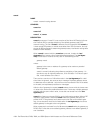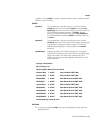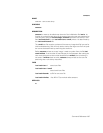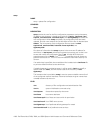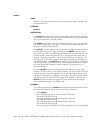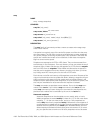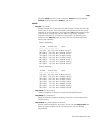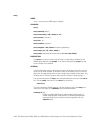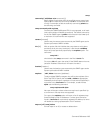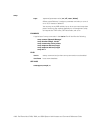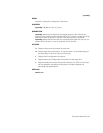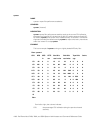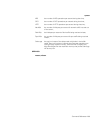
A-92 Dell PowerVault 720N, 740N, and 760N System Administrator and Command Reference Guide
NAME
snap - manage snapshots
SYNOPSIS
snap list [
vol
_
name
]
snap create | delete
vol
_
name
name
snap rename
vol
_
name
from
to
snap sched [
vol
_
name
[
weeks
[
days
[
hours
[@
list
] ] ] ] ]
snap reserve [
vol
_
name
[
percent
] ]
DESCRIPTION
The snap family of commands provides a means to create and manage snap-
shots in each volume.
A snapshot is a read-only copy of the entire file system as of the time the snap-
shot was created. The filer uses a copy-on-write technique to create snapshots
very quickly without consuming any disk space. Only as blocks in the active file
system are modified and written to new locations on disk does the snapshot
begin to consume extra space.
Snapshots are exported to all CIFS or NFS clients. They can be accessed from
each directory in the file system. From any directory, a user can access the set of
snapshots from a hidden sub-directory that appears to a CIFS client as ~snapsht
and to an NFS client as .snapshot. These hidden sub-directories are special in
that they can be accessed from every directory, but they only show up in direc-
tory listings at an NFS mount point or at the root of CIFS share.
Each volume on the filer can have up to 20 snapshots at one time. Because of the
copy-on-write technique used to update disk blocks, deleting a snapshot will gen-
erally not free as much space as its size would seem to indicate. Blocks in the
snapshot may be referenced by other snapshots, or by the active file system, and
thus may be unavailable for reuse even after the snapshot is deleted.
The snap commands are persistent across reboots. Do not include snap com-
mands in the /etc/rc. If you include a snap command in the /etc/rc file, the
same snap command you enter through the command line interface does not
persist across a reboot and is overridden by the one in the /etc/rc file.
Automatic snapshots
Automatic snapshots can be scheduled to occur weekly, daily, or hourly.
Weekly snapshots are named weekly.
N
, where
N
is 0 for the most recent
snapshot, 1 for the next most recent, and so on. Daily snapshots are
named daily.
N
and hourly snapshots hourly.
N
. Whenever a new snapshot of
a particular type is created and the number of existing snapshots of that type
exceeds the limit specified by the sched option described below, then the
oldest snapshot is deleted and the existing ones are renamed. If, for exam-
ple, you specified that a maximum of 8 hourly snapshots were to be saved
snap



